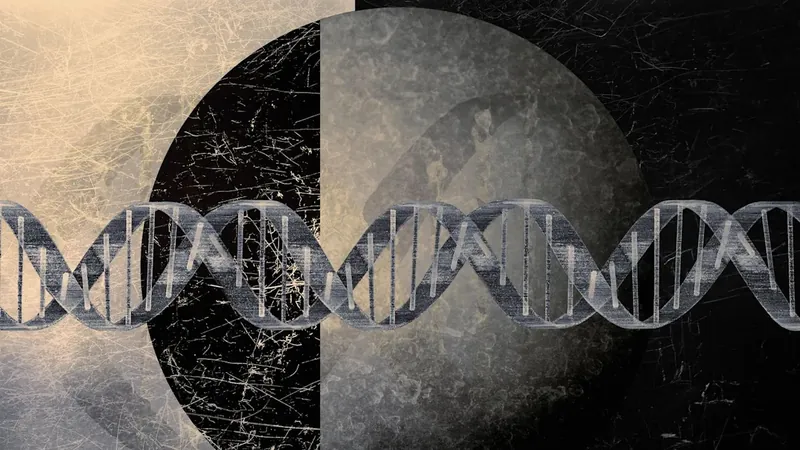
Revealed: The Hidden Code within Our DNA that Could Change Everything!
2025-07-28
Author: Emma
Unlocking the Mysteries of Our Genome
Did you know that a staggering 45% of human DNA consists of transposable elements (TEs)? Once dismissed as mere 'junk DNA,' these genetic relics left behind by extinct viruses are now at the center of groundbreaking scientific revelations!
From 'Junk' to 'Key Players'
For decades, scientists viewed TEs as throwaway segments of our genetic makeup. Thanks to a revolutionary study, however, this perception is rapidly changing. Researchers have meticulously classified TEs according to their evolutionary history, shedding light on their potential roles in gene expression and human development.
A Deep Dive into DNA Discovery
Since Friedrich Miescher isolated DNA over 150 years ago, our understanding of this complex molecule has evolved tremendously. In the 1940s, cytogeneticist Barbara McClintock uncovered TEs, or 'jumping genes,' that comprise nearly half of our DNA. Initially regarded as insignificant due to their repetitive nature, recent studies reveal that these elements might actually be pivotal in the evolution of chromosomes, species, and genetic diversity.
New Methods, New Insights
In a groundbreaking study published in 'Science Advances,' researchers have unveiled an innovative approach to analyzing TEs. By classifying them according to evolutionary relationships, scientists identified a specific sequence family called MER11 and its four distinct subgroups. These findings hint at their significant regulatory roles in the genome.
Functional Implications of MER11
The study's co-author, Fumitaka Inoue from Kyoto University, emphasized that while our genome has been sequenced, much remains a mystery. The MER11 sequences were found to function like on-off switches, crucial for gene expression, especially during early human development.
Proving the Hypothesis: Seeing Patterns in Action
To validate their findings, researchers used a technique called lentiviral massively parallel reporter assay (lentiMPRA) on 7,000 MER11 sequences from human stem and early-stage neural cells. Astonishingly, the G4 subgroup exhibited the strongest influence over gene expression, demonstrating that ancient viral DNA can have active roles in shaping modern primate DNA.
A Journey of Discovery Continues
With over 150 years of genomic exploration behind us, one thing is clear: our understanding of the human genome is far from complete. Each new discovery opens the door to thrilling possibilities in genetics, evolution, and human development, proving that there's always more to learn from our own biology.









 Brasil (PT)
Brasil (PT)
 Canada (EN)
Canada (EN)
 Chile (ES)
Chile (ES)
 Česko (CS)
Česko (CS)
 대한민국 (KO)
대한민국 (KO)
 España (ES)
España (ES)
 France (FR)
France (FR)
 Hong Kong (EN)
Hong Kong (EN)
 Italia (IT)
Italia (IT)
 日本 (JA)
日本 (JA)
 Magyarország (HU)
Magyarország (HU)
 Norge (NO)
Norge (NO)
 Polska (PL)
Polska (PL)
 Schweiz (DE)
Schweiz (DE)
 Singapore (EN)
Singapore (EN)
 Sverige (SV)
Sverige (SV)
 Suomi (FI)
Suomi (FI)
 Türkiye (TR)
Türkiye (TR)
 الإمارات العربية المتحدة (AR)
الإمارات العربية المتحدة (AR)